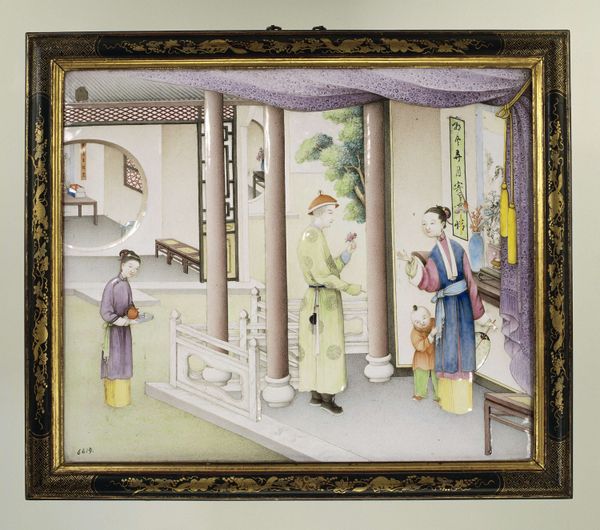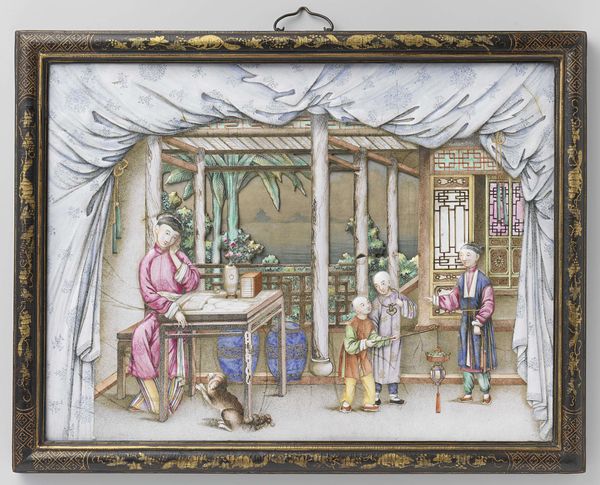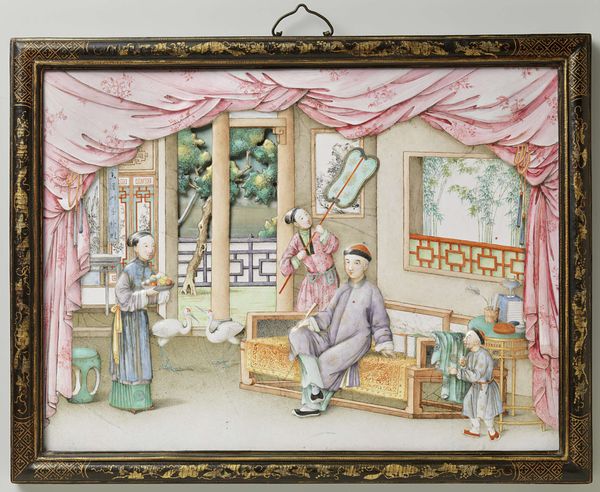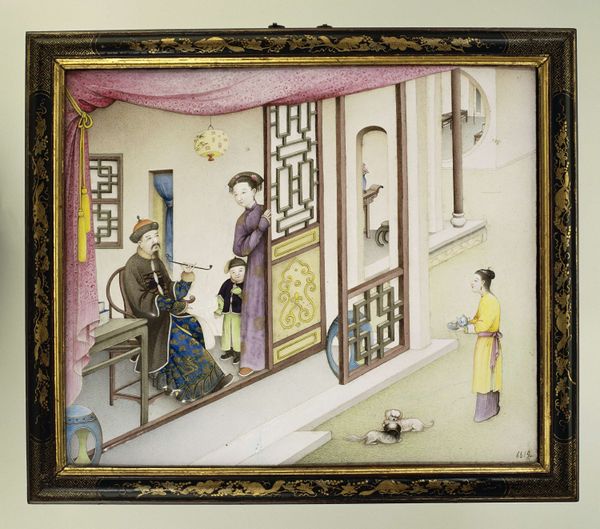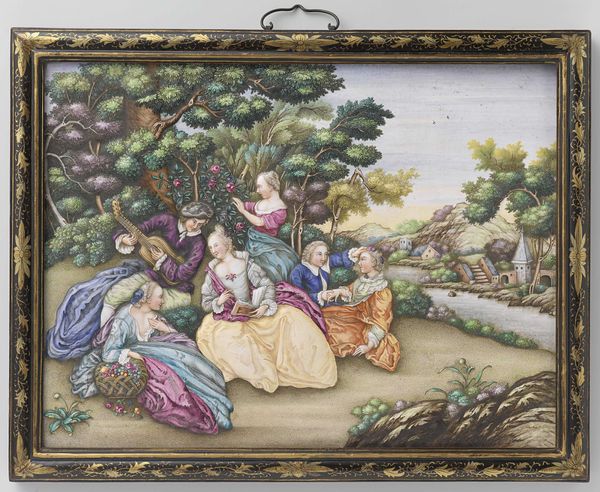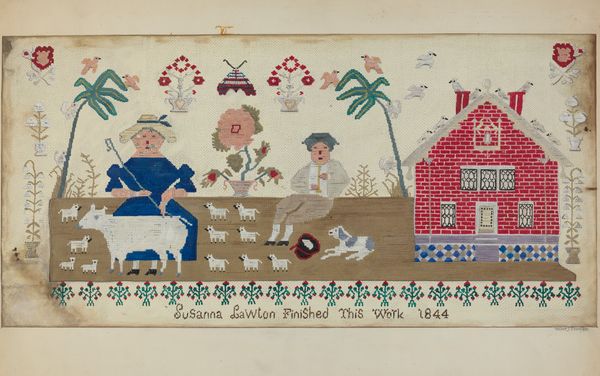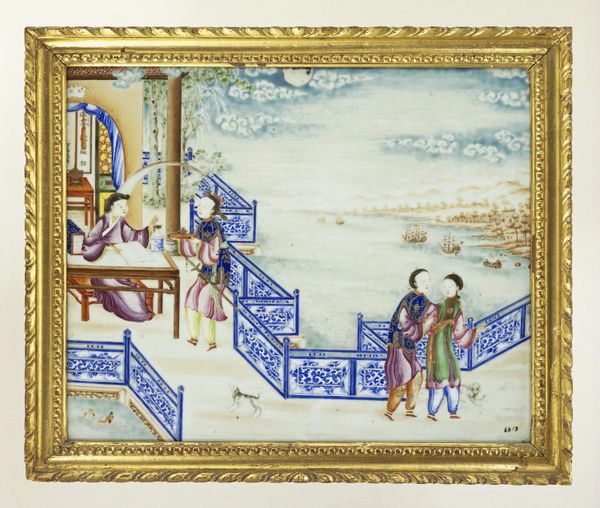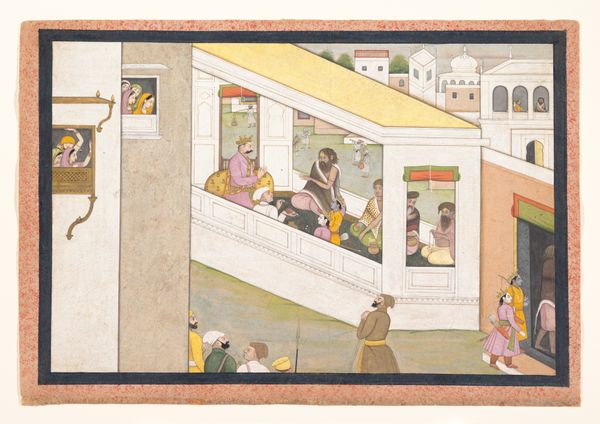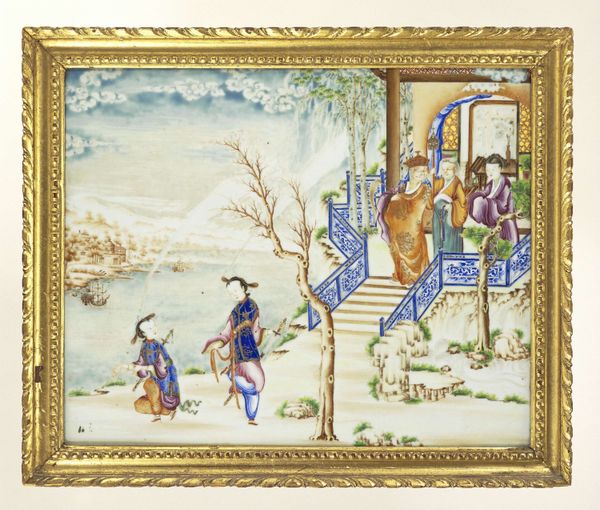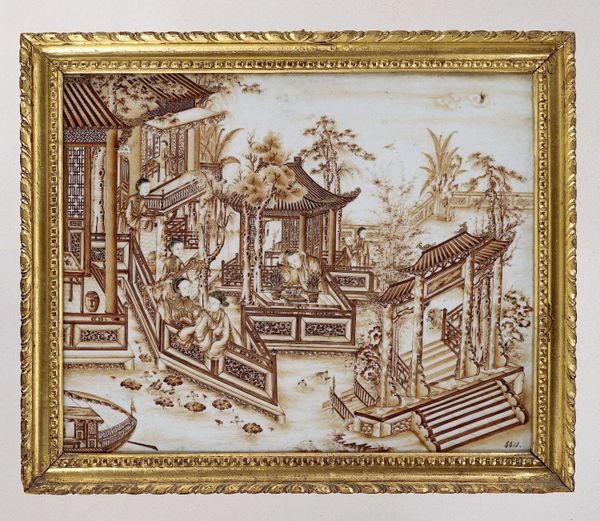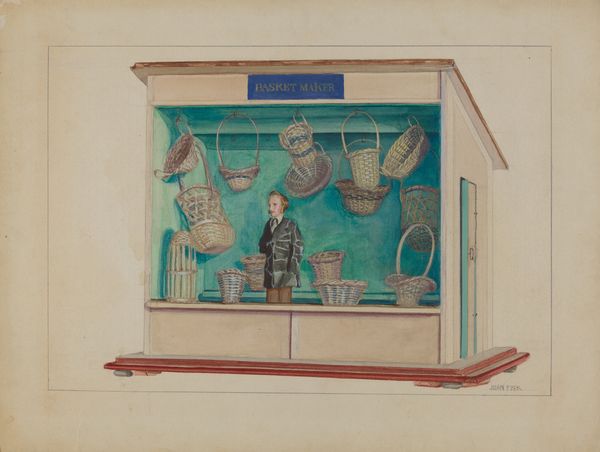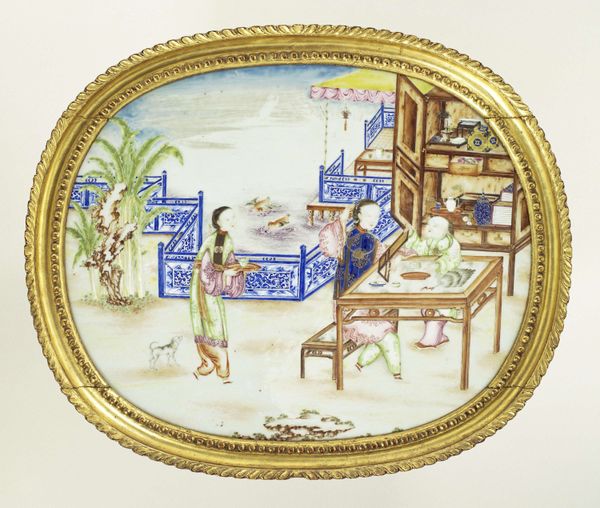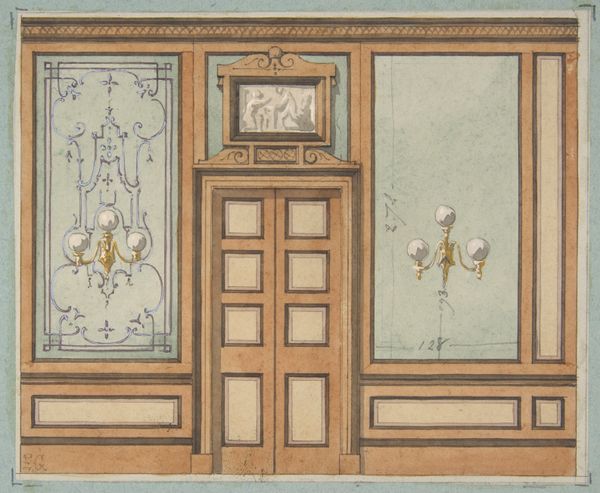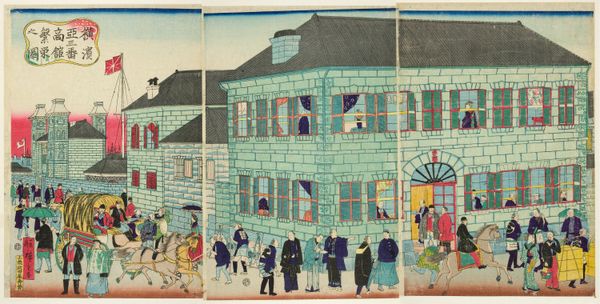
painting, watercolor
#
painting
#
asian-art
#
watercolor
#
watercolour illustration
#
genre-painting
#
history-painting
#
miniature
#
watercolor
Dimensions: height 37.0 cm, width 48.5 cm
Copyright: Rijks Museum: Open Domain
Curator: This watercolor illustration, painted around 1770-1775, is titled "Plaque Depicting a Mandarin's Visit." It's currently housed here at the Rijksmuseum. Editor: It strikes me as both formal and intimate. The detail is exquisite, almost miniaturist in its precision, yet the scene itself feels like a private moment observed. There's an interesting tension there. Curator: Absolutely. These genre scenes were often created for export, catering to European tastes fascinated by the exoticism of the East. The Mandarin, his robes suggesting status and authority, is the focal point, but everything around him speaks to the complexities of 18th-century Chinese social rituals. Editor: Look at the Pheasants. Are they meant as trophies or pets? Then there are the flowers. Every object in the room looks calculated. What would a painting such as this convey to someone within its original cultural context? Curator: Well, the Mandarin himself would likely read it as a validation of his status, a representation of the smooth functioning of his household, perhaps even an invocation of good fortune. The gifts offered, though subtly rendered, reinforce the power dynamic. It's about displaying and confirming hierarchical order. Editor: And to European viewers? The architecture itself must have appeared novel. All the colors are very restrained and muted, except for the Pheasants' bold markings which adds some flair and an unexpected touch. It is interesting to wonder how accurate are those representations... Curator: The presumed "accuracy" often served only to perpetuate an idealized image of China, carefully crafted for the European gaze, filled with symbolism not entirely grasped by its audience. They may or may not be accurately portraying a specific person or interior but instead creating an idea. Editor: Which, in itself, becomes a historical document – not of a reality, but of a perception. A visual record of cultural exchange, rife with assumptions and interpretations, reflecting both the subject and the observer. Curator: Precisely. Its value resides not just in its aesthetic qualities but also as a historical marker, illuminating the intricacies of cross-cultural interactions and the enduring allure of the "other." Editor: It definitely has given me some food for thought around the impact imagery and artistic representations can have over history.
Comments
rijksmuseum about 2 years ago
⋮
These two rare series of enamel plaques come from the collection of Jean Theodore Royer, the leading Sinologist in the Netherlands in the 18th century. The inscription on the lantern (xun fu) mentions that the depicted mandarin (a high-ranking civil servant) in winter clothing is a governor. The banderole at left above the window translates as: ‘a meal to welcome a guest who has come from afar.’
Join the conversation
Join millions of artists and users on Artera today and experience the ultimate creative platform.
